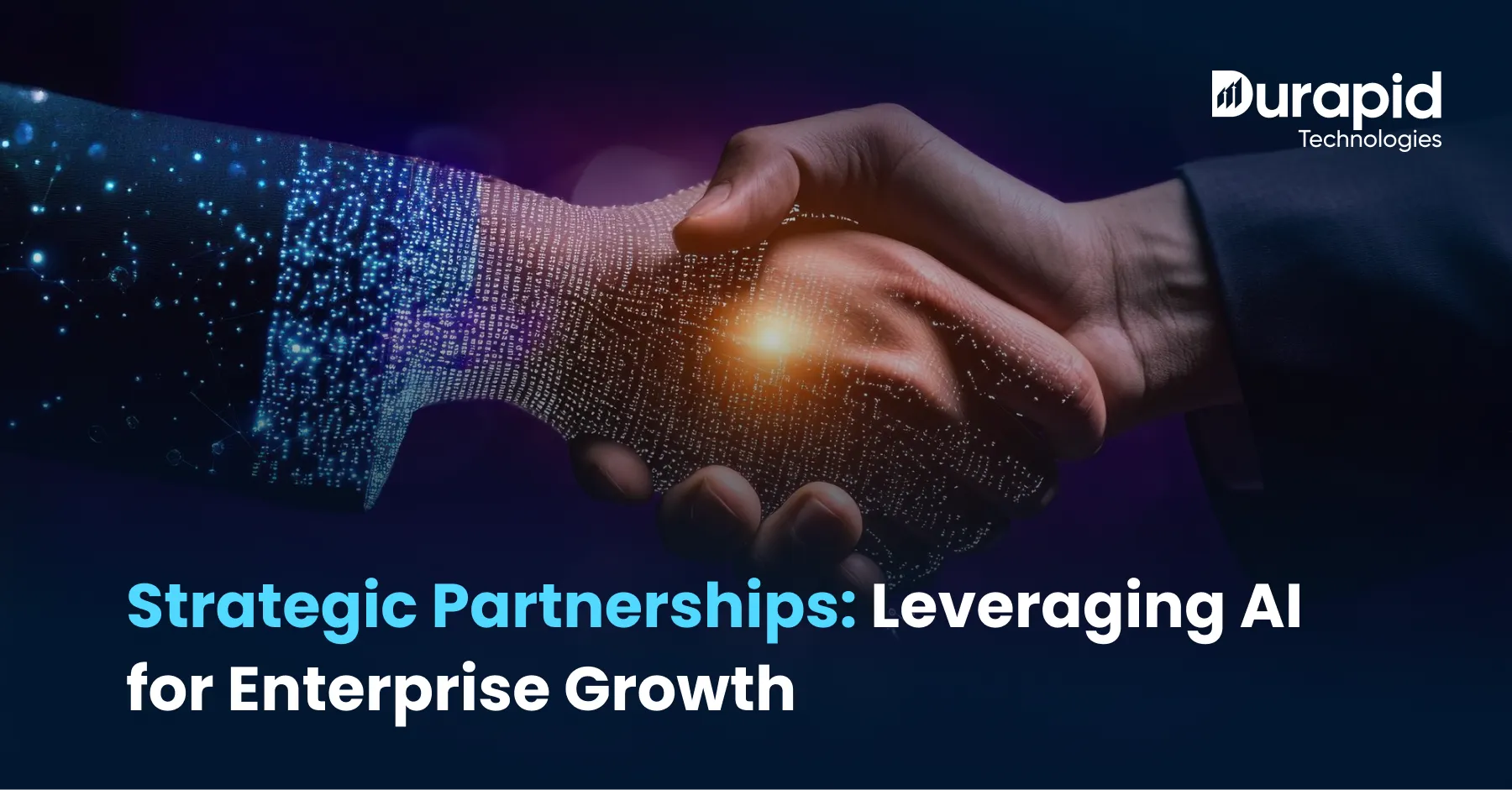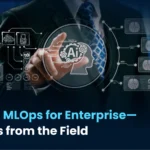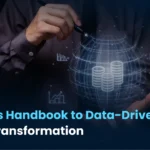Strategic Partnerships: Leveraging AI for Enterprise Growth

Let’s talk about something that’s changing the game for Indian enterprises right now.
AI partnerships.
Not the kind where you shake hands, exchange business cards, and call it a day. The real deal, strategic alliances that are actually transforming how businesses operate, innovate, and grow.
In 2025, if you’re still trying to build everything in-house, you’re probably burning through resources faster than you’re creating value. The smartest CTOs and CIOs? They’re building ecosystems, not empires.
Why AI Partnerships Matter in 2025
Here’s the thing nobody tells you about AI transformation: doing it alone is expensive, slow, and honestly? Kind of outdated.
The landscape has shifted. According to Gartner’s latest research, organizations that leverage strategic AI partnerships achieve digital transformation outcomes 3x faster than those going solo. That’s not a small difference that’s the difference between leading your industry and playing catch-up.
The Real Cost of Going Alone
When you try to build AI capabilities entirely in-house, you’re looking at:
- Talent wars you probably won’t win: The competition for AI/ML experts is brutal. Companies like Google, Microsoft, and Amazon are offering packages that most enterprises simply can’t match.
- Technology stack complexity: Between Microsoft Azure’s evolving AI services, AWS’s machine learning tools, and specialized platforms like Databricks, keeping up with the tech landscape is a full-time job.
- Time-to-value that kills momentum: Building from scratch means 12-18 months before you see results. Your competitors? They’re already in production.
At Durapid Technologies, we’ve watched this play out dozens of times. Companies that partner strategically get to market faster, spend smarter, and scale more efficiently.
What’s Changed in 2025
The AI partnership landscape has matured significantly. We’re seeing:

Ecosystem-First Thinking: Organizations are building partner networks instead of vendor relationships. Think SAP’s Business AI ecosystem, multiple players collaborating to deliver integrated solutions.
Co-Innovation Models: Partners aren’t just service providers anymore. They’re co-creating IP, sharing risk, and building solutions together. Microsoft’s Co-sell program has evolved into genuine collaboration frameworks.
Industry-Specific Alliances: Generic partnerships are out. Specialized alliances focusing on banking, healthcare, or manufacturing are delivering measurable ROI. When Durapid works with financial services clients, we bring Azure Synapse expertise specifically tailored to credit risk and fraud detection.
AI Governance Partnerships: With regulations tightening, partnerships now include compliance frameworks, ethical AI guidelines, and security protocols from day one.
Building Successful Alliances: The Reality Check
Creating AI partnerships that actually work isn’t about signing MOUs and hoping for the best. It requires intentional strategy and clear execution.
Start with Business Outcomes, Not Technology
The biggest mistake we see? Leading with technology instead of business problems.
Wrong approach: “We need a GenAI partnership” Right approach: “We need to reduce customer service costs by 40% while improving satisfaction scores”
When you start with outcomes, the right partnerships become obvious. For example, if you’re in retail and struggling with dynamic pricing, you need partners who understand both AI/ML algorithms AND retail economics. That’s where Durapid’s retail solutions combine technical expertise with industry knowledge.
The Partnership Readiness Framework
Before approaching potential partners, assess your readiness across four dimensions:
- Data Maturity Do you have clean, accessible data? According to McKinsey, 70% of AI projects fail due to data issues, not algorithm problems.
If your data is scattered across legacy systems, you need a partner who can handle enterprise app modernization alongside AI implementation.
- Technical Infrastructure Can your current infrastructure support AI workloads? Cloud partnerships with Azure or AWS become critical here.
Durapid’s cloud migration services have helped 35+ enterprises transition smoothly without disrupting operations.
- Organizational Buy-In Is your leadership team aligned? AI partnerships fail when there’s internal resistance. You need executive sponsorship that goes beyond budget approval to active participation.
- Change Management Capability Can your organization absorb new ways of working? The best AI partnership delivers a solution your team actually adopts.
Selecting the Right Partners: Beyond the Pitch Deck
Everyone has impressive slides. What actually matters?
Proven Track Record in Your Industry Generic AI capabilities mean nothing if they don’t translate to your specific challenges. When Durapid works with healthcare clients, we bring HL7/FHIR integration experience and regulatory compliance knowledge, not just ML models.
Technical Depth Where It Counts Look for specific certifications and expertise. At Durapid, we have 95+ Databricks-certified professionals and 150+ Microsoft-certified experts. That’s not for show, it’s the foundation for delivering complex solutions.
Co-Investment Mentality The best partnerships involve shared risk and reward. Whether through Microsoft’s IP Co-sell program or performance-based pricing models, look for partners willing to bet on mutual success.
Cultural Compatibility This sounds soft, but it’s critical. Can you work with their team during high-pressure situations? Do they communicate transparently? Cultural misalignment kills more partnerships than technical issues.
Impact on Digital Transformation: Real Stories, Real Results
Theory is one thing. Execution is everything.
Case Study: Financial Services Transformation
A leading Indian bank partnered with Durapid to overhaul their credit risk assessment system. The traditional approach would have taken 18 months and cost 2x their budget.
Instead, we built a strategic alliance model:
- Azure ML for model training and deployment
- Databricks for data engineering at scale
- Power BI for executive dashboards
- Durapid’s financial services expertise for domain-specific model tuning
Result? Live in 6 months. Credit decisioning time reduced from 72 hours to under 2 hours. Loan approval rates improved by 23% while maintaining risk standards.
The game-changer wasn’t just technology, it was the alliance model that combined OpenAI’s capabilities, Microsoft’s infrastructure, and Durapid’s financial services specialization.
Manufacturing: Predictive Maintenance Alliance
A manufacturing client was losing millions in unplanned downtime. Their in-house team had spent a year trying to build a predictive maintenance system. Progress? Minimal.
We structured a three-way partnership:
- Azure IoT Hub for sensor data collection
- Durapid’s ML engineers for model development
- The client’s domain experts for process knowledge
Within 4 months, the system was predicting equipment failures 14 days in advance with 87% accuracy. Downtime reduced by 31%. Maintenance costs dropped by 22%.
But here’s what made it work: the partnership model where each player brought their unique strength. No one tried to do everything.
Healthcare: NLP Medical Transcription
Healthcare documentation is painful. Doctors spend more time on paperwork than patient care.
Through a strategic alliance combining Azure Cognitive Services, Durapid’s NLP expertise, and a healthcare provider’s clinical workflows, we built an AI transcription system that:
- Reduced documentation time by 65%
- Improved clinical note accuracy
- Freed up 2+ hours per physician per day
- Maintained HIPAA compliance throughout
The partnership approach meant we could move fast without compromising on healthcare-specific requirements.
Partnership Models for Indian Enterprises
Indian businesses face unique challenges: diverse regulatory environments, varied digital maturity levels, and the need to balance innovation with stability.

The Co-Development Model
Best for: Enterprises with some technical capability but lacking specialized AI expertise.
How it works: Your team and your partner work side-by-side, building solutions collaboratively. Knowledge transfer happens naturally. By project end, your team has grown significantly.
Durapid uses this model extensively. Our 300+ developers work embedded with client teams, ensuring skills stay in-house even after project completion.
The Managed Service Model
Best for: Organizations prioritizing speed to market over in-house capability building.
How it works: Your partner handles end-to-end delivery from infrastructure to models to ongoing optimization. You focus on business outcomes.
This works brilliantly when combined with platforms like Azure Synapse where operational complexity is high but business value is clear.
The Innovation Lab Model
Best for: Large enterprises wanting to experiment with multiple AI use cases simultaneously.
How it works: Create a joint innovation center with your partner. Run multiple pilots in parallel. Scale what works, kill what doesn’t.
We’ve helped several enterprises set up these labs, combining Microsoft’s AI tools, Durapid’s implementation expertise, and client-specific business knowledge.
The Ecosystem Orchestration Model
Best for: Complex transformations requiring multiple specialized partners.
How it works: One strategic partner (like Durapid) orchestrates an ecosystem of specialists, SAP for ERP modernization, Microsoft for cloud infrastructure, Databricks for data engineering.
This is where Durapid’s Premium SAP partnership and Microsoft co-sell relationships create unique value. We speak all these languages and can integrate complex solutions seamlessly.
ROI Demonstrations: Making the Business Case
CFOs need numbers, not promises. Here’s how winning partnerships demonstrate value:
Phase 1: Quick Wins (0-3 months) Small-scope proof of concept with measurable impact. For example, automating one high-volume process and showing 40% efficiency gains.
Phase 2: Scaled Deployment (3-9 months) Expand successful pilots. Track metrics religiously:
- Time saved per process
- Error reduction percentages
- Cost per transaction improvements
- Customer satisfaction changes
Phase 3: Transformation (9-18 months) Platform-level changes that fundamentally alter how the business operates. This is where 10x returns happen.
One logistics client saw these results across phases:
- Phase 1: 35% faster invoice processing (3 months)
- Phase 2: 22% reduction in supply chain delays (8 months)
- Phase 3: Complete demand forecasting transformation saving $4.2M annually (15 months)
The partnership approach made this possible because we could adapt strategy based on real results at each phase.
Strategic Implementation: What Actually Works
Theory meets reality in implementation. Here’s what separates successful AI partnerships from expensive failures.
Start Small, Think Big
Every enterprise wants to “transform everything.” Smart ones start with one high-impact use case.
Pick something where:
- Business value is obvious and measurable
- Data exists and is accessible
- Stakeholders are genuinely engaged
- Success can be demonstrated in 3-4 months
At Durapid, we’ve seen this pattern repeatedly: companies that start with focused pilots and scale systematically outperform those that try to boil the ocean.
Build for Integration, Not Isolation
AI solutions that don’t integrate with existing systems create more problems than they solve.
This means:
- Understanding your enterprise architecture upfront
- Planning API strategies from day one
- Ensuring new AI systems work with legacy platforms
- Building with DevOps principles for continuous improvement
When we integrate Azure ML models with existing SAP systems, the magic isn’t in the AI, it’s in making the AI accessible where decisions actually happen.
Measure What Matters
Vanity metrics kill AI partnerships. Model accuracy doesn’t matter if business outcomes don’t improve.
Track metrics like:
- Process cycle time reduction
- Cost per transaction
- Customer satisfaction scores
- Employee productivity gains
- Revenue impact (for customer-facing applications)
Be brutally honest about results. If something isn’t working, pivot fast. The partnership model allows for this agility.
Invest in Change Management
Technical success means nothing if users reject the solution.
We’ve learned this the hard way: the best AI model collecting dust is worthless. That’s why Durapid’s implementations always include:
- User training programs
- Change champion identification
- Continuous feedback loops
- Iterative improvements based on actual usage
The 2025 Partnership Landscape: What’s Next
AI partnerships are evolving fast. Here’s what forward-thinking enterprises are doing:

Vertical-Specific Alliances
Generic AI partnerships are giving way to industry-focused collaborations. Gartner predicts that by 2026, 80% of successful AI deployments will be built on industry-specific partnerships.
This is where Durapid’s multi-industry expertise creates value. Whether it’s healthcare, retail, or manufacturing, we bring battle-tested solutions, not just capabilities.
AI Governance Partnerships
With regulations like India’s Digital Personal Data Protection Act and global AI governance frameworks emerging, partnerships now include compliance from the start.
This means working with partners who understand:
- Data localization requirements
- AI ethics frameworks
- Model explainability for regulated industries
- Security and privacy by design
Multi-Cloud AI Strategies
The days of single-cloud strategies are ending. Enterprises want the best of Azure, AWS, and specialized platforms like Databricks.
Smart partnerships help navigate this complexity, ensuring you’re not locked into suboptimal technical choices because of vendor relationships.
Edge AI and Distributed Intelligence
As AI moves closer to data sources, manufacturing floors, retail stores, hospital rooms – partnerships need to deliver edge computing expertise alongside AI capabilities.
Durapid’s work with Azure IoT and edge AI demonstrates how strategic partnerships can deploy intelligence wherever it’s needed.
How IT Managers Should Evaluate Potential Partners
You’re the one who has to make this work. Here’s your evaluation framework:
Technical Capability Assessment
Don’t just ask: “Do you do AI?” Ask: “Show me three projects similar to ours. What were the challenges? How did you solve them?”
Look for:
- Relevant industry experience
- Specific technical certifications (like Durapid’s 150+ Microsoft and 95+ Databricks certifications)
- Open-source contributions
- Published case studies with real metrics
Partnership Philosophy
Don’t just ask: “What’s your delivery model?” Ask: “How do you handle situations when initial approaches don’t work?”
The answer reveals whether they’re genuine partners or just vendors executing scope.
Knowledge Transfer Commitment
Don’t just ask: “Will you train our team?” Ask: “How do you ensure our team can maintain and evolve the solution after your engagement ends?”
Great partners build capability, not dependency.
Commercial Model Alignment
Don’t just ask: “What’s your rate card?” Ask: “Can we structure pricing around outcomes rather than just time and materials?”
Partners willing to tie compensation to results are partners worth having.
Cultural Compatibility Test
Don’t just ask: Standard interview questions Do: Have your team spend time with their team. Run a small pilot. See how they handle pressure and ambiguity.
Chemistry matters more than most procurement processes acknowledge.
FAQs
How do AI partnerships boost enterprise growth?
They fast-track transformation. Instead of spending years building in-house, you get ready-made expertise, proven playbooks, and the ability to scale faster. Think: months of progress instead of years.
What are the best practices for alliance management?
Set clear goals, measure what matters, talk often, and stay flexible. The strongest alliances don’t just manage tasks, they nurture relationships.
How should IT managers evaluate potential partners?
Look at skills, mindset, transparency, pricing, and culture fit. Run pilots, check references, and make sure they’re building your capability, not just billing hours.
The Bottom Line
AI partnerships in 2025 aren’t about outsourcing problems, they’re about amplifying capabilities.
The enterprises winning right now aren’t trying to build everything in-house. They’re strategically partnering with specialists who can deliver faster, smarter, and more effectively than any single organization could alone.
Whether you’re a CTO evaluating your first AI initiative or a CIO scaling existing capabilities, the partnership model offers a proven path forward. The key is choosing partners who bring genuine expertise, share your commitment to outcomes, and build for long-term success.
At Durapid Technologies, we’ve built our entire business model around being that partner, combining 300+ skilled developers, deep industry expertise across 9+ sectors, and strategic alliances with Microsoft, SAP, and leading technology providers to deliver AI solutions that actually work.
The question isn’t whether to partner on AI. It’s who to partner with and how to structure those relationships for maximum impact.
Choose wisely. Execute deliberately. Scale confidently.
Your competition already is.
Ready to explore AI partnerships for your enterprise?
Contact Durapid Technologies:
- 📧 sales@durapid.com
- 📞 +91 99835 75860 | +44 77711 30328
- 🌐 www.durapid.com
Let’s build something remarkable together.





